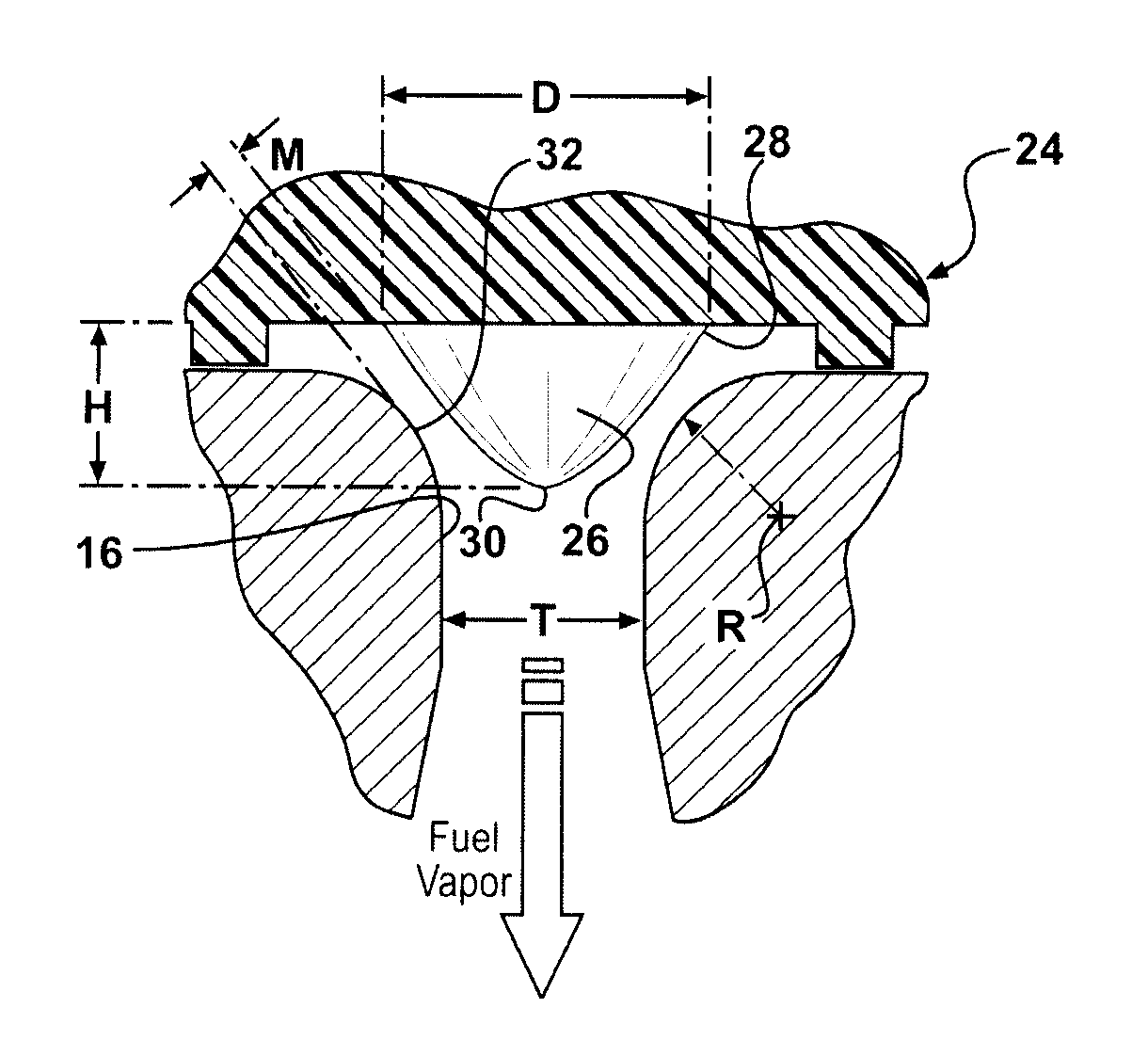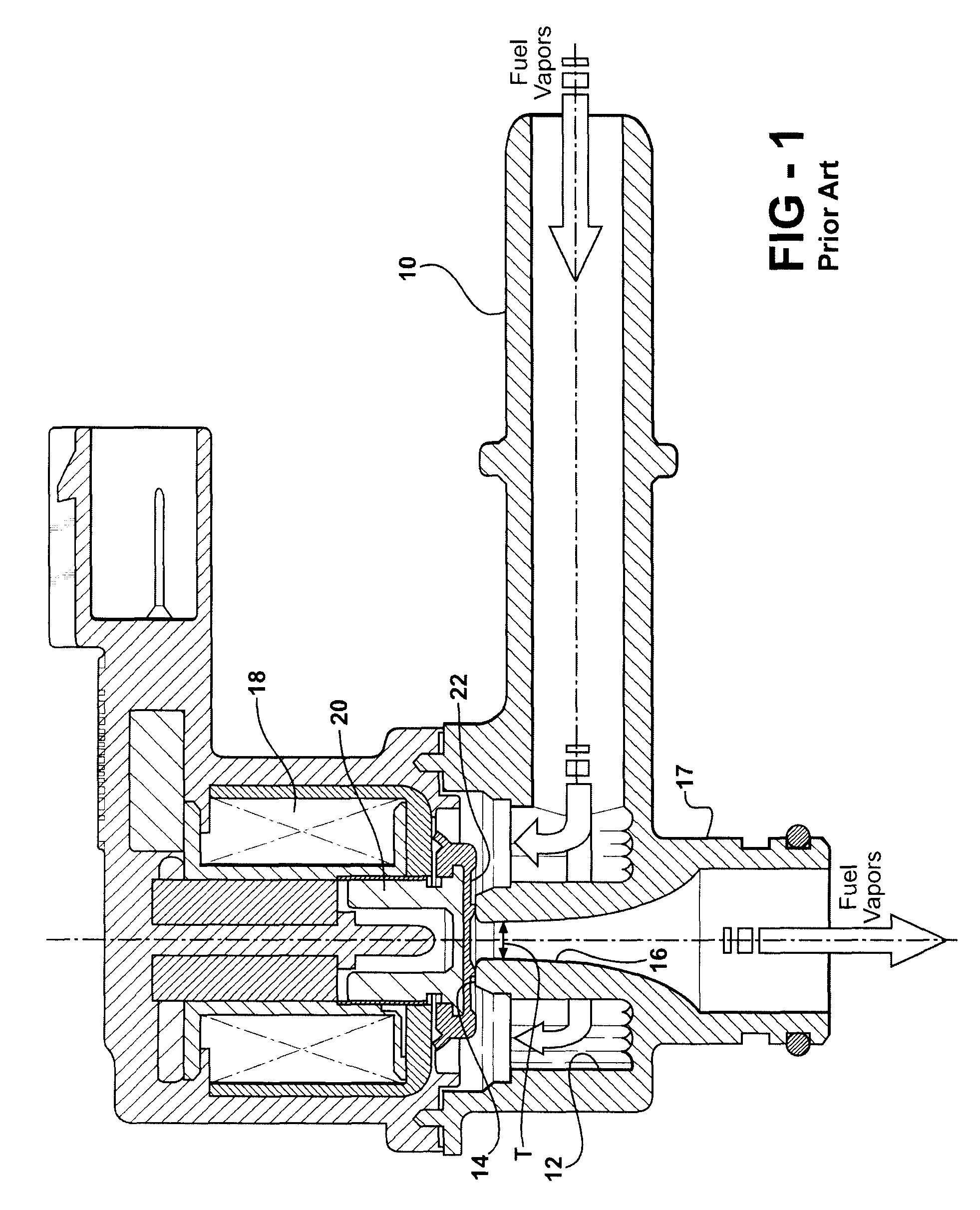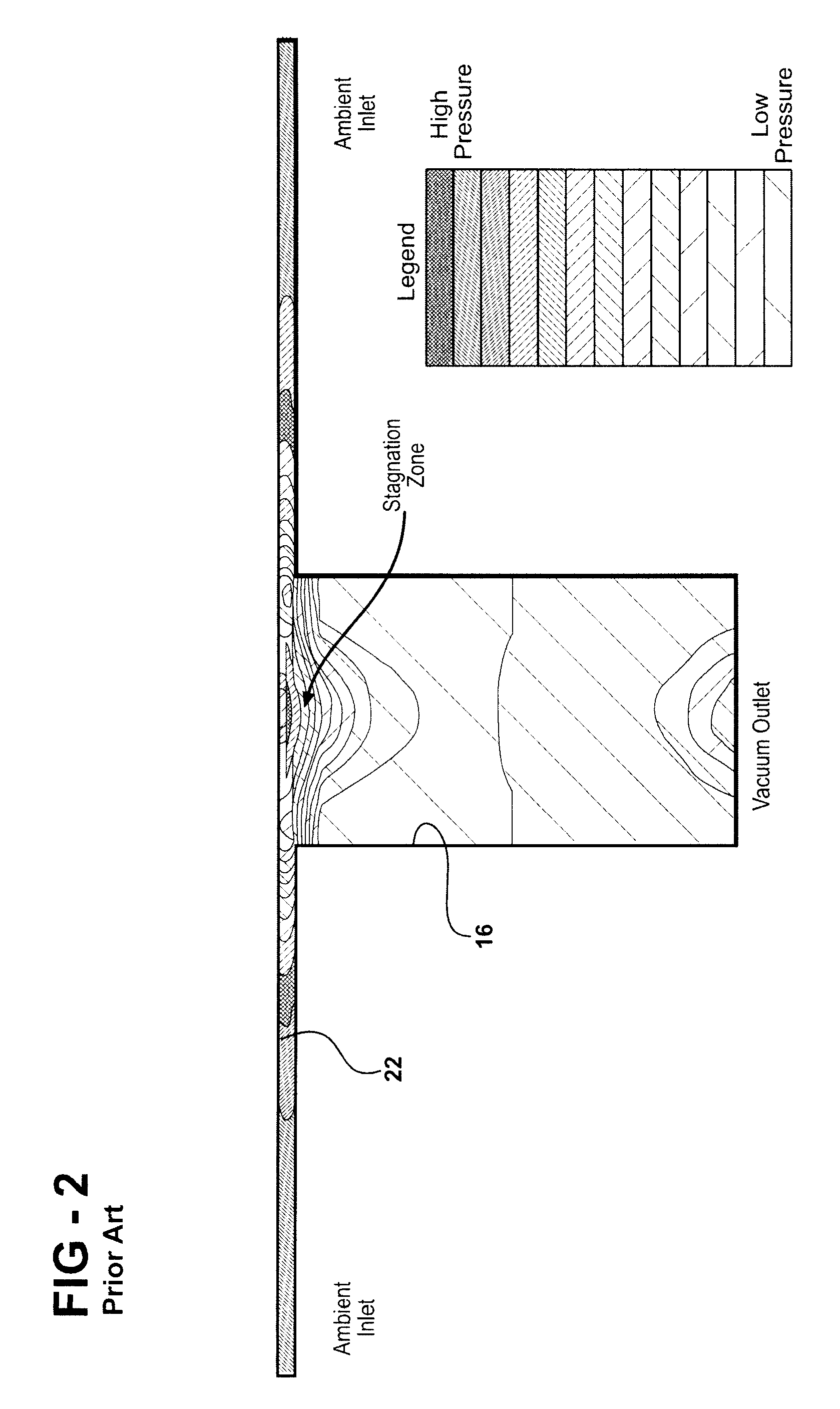Low noise valve assembly
a valve assembly and low noise technology, applied in the direction of valve operating means/release devices, combustion air/fuel air treatment, machines/engines, etc., can solve the problems of noise being a whooshing noise, ticking noise, noise noise, etc., to eliminate or substantially reduce the creation of objectionable noise during operation, the effect of reducing the creation of nois
- Summary
- Abstract
- Description
- Claims
- Application Information
AI Technical Summary
Benefits of technology
Problems solved by technology
Method used
Image
Examples
Embodiment Construction
[0023]Referring to the Figures, wherein like numerals indicate like or corresponding parts throughout the several views, a typical prior art CPV valve is generally shown at FIG. 1 including an inlet tube 10 which, although not shown, is of the type which extends in fluid conducting fashion to a fuel tank containing volatile liquid fuel. Commonly, a collection canister will be disposed in line between the CPV valve and the fuel tank. The inlet tube terminates in a generally annular chamber 12. An outlet tube 17 has a generally annular valve seat 14 disposed within the inlet tube chamber 12. Flow channel 16 extends centrally through the valve seat 14. The flow channel 16 has a minimum throat diameter T immediately downstream of the valve seat 14. The throat diameter T eventually widens in diffuser-like fashion as the gas flow is ultimately routed to the vacuum inlet of an internal combustion engine. An electromagnetic valve assembly includes an electromagnetic coil 18 that surrounds a...
PUM
 Login to View More
Login to View More Abstract
Description
Claims
Application Information
 Login to View More
Login to View More - R&D
- Intellectual Property
- Life Sciences
- Materials
- Tech Scout
- Unparalleled Data Quality
- Higher Quality Content
- 60% Fewer Hallucinations
Browse by: Latest US Patents, China's latest patents, Technical Efficacy Thesaurus, Application Domain, Technology Topic, Popular Technical Reports.
© 2025 PatSnap. All rights reserved.Legal|Privacy policy|Modern Slavery Act Transparency Statement|Sitemap|About US| Contact US: help@patsnap.com



